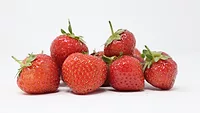Fact or Myth? Breaking Down the Dirty Dozen List from EWG

For the past few years, Food Safety Magazine has posted about Environmental Working Group's (EWG) "Dirty Dozen" and "Clean Fifteen" lists.
However, it has recently been brought to light that EWG's lists may not accurately represent the U.S. Department of Agriculture's (USDA) data.
"If junk science were a competition, the [EWG's] annual reported 'Dirty Dozen' would routinely make the finals. As expected, in 2021, EWG has again demonized conventional agriculture practices with their Dirty Dozen list, and there are no shortages of naïve reporters in the media willing to accommodate their nonsense," says David Lightsey, M.Sc., author of the Dirty Dozen rebuttal post.
The American Council on Science and Health reported that EWG doesn't state references for its USDA data. One example of this is in its March 17, 2021 press release for the Dirty Dozen, where it stated that "nearly 70 percent of the non-organic fresh produce sold in the U.S. contains residues of potentially harmful chemical pesticides.”
The California Department of Pesticide Regulation recently found that 43 percent of crops tested had no pesticide residue, and at the federal level, no pesticide chemical residues were found in 47.1 percent of the domestic and 47.2 percent of the imported samples.
Secondly, the EWG talks about organic food as if it does not have pesticide residue, which is false. Studies have found that domestic and imported organic samples contain 21 percent and 55 percent pesticide residues, respectively.
In addition, the EWG misrepresents the safety of the tools necessary to feed consumers at prices all income classes can afford. Dirty Dozen's number two item on their list, spinach, uses a pesticide called permethrin to protect it. Permethrin is one of three pyrethroid compounds used in agriculture as an insecticide, acting as a neurotoxin to insects who cannot metabolize it as quickly as people.
Looking for quick answers on food safety topics?
Try Ask FSM, our new smart AI search tool.
Ask FSM →
The National Pesticide Information Center has said that less than 1 percent of more than 1,700 food samples tested by the USDA had detectable levels of permethrin—a paltry amount. Therefore, this doesn't appear to be a genuine concern for consumers, as the EWG portrayed it to be. When consumers are exposed to a tiny amount of permethrin, their livers rapidly detoxify it, and it is excreted in urine, making this minute exposure level a moot point, says Lightsey.
Lightsey finishes his article by saying that EWG's concern for the pesticide is not something that consumers should be worried about, and that his "reaction and need to respond are comparable to road rage. It's an overwhelming feeling you get and need to respond to when you personally experience the result of someone else’s idiocy."








